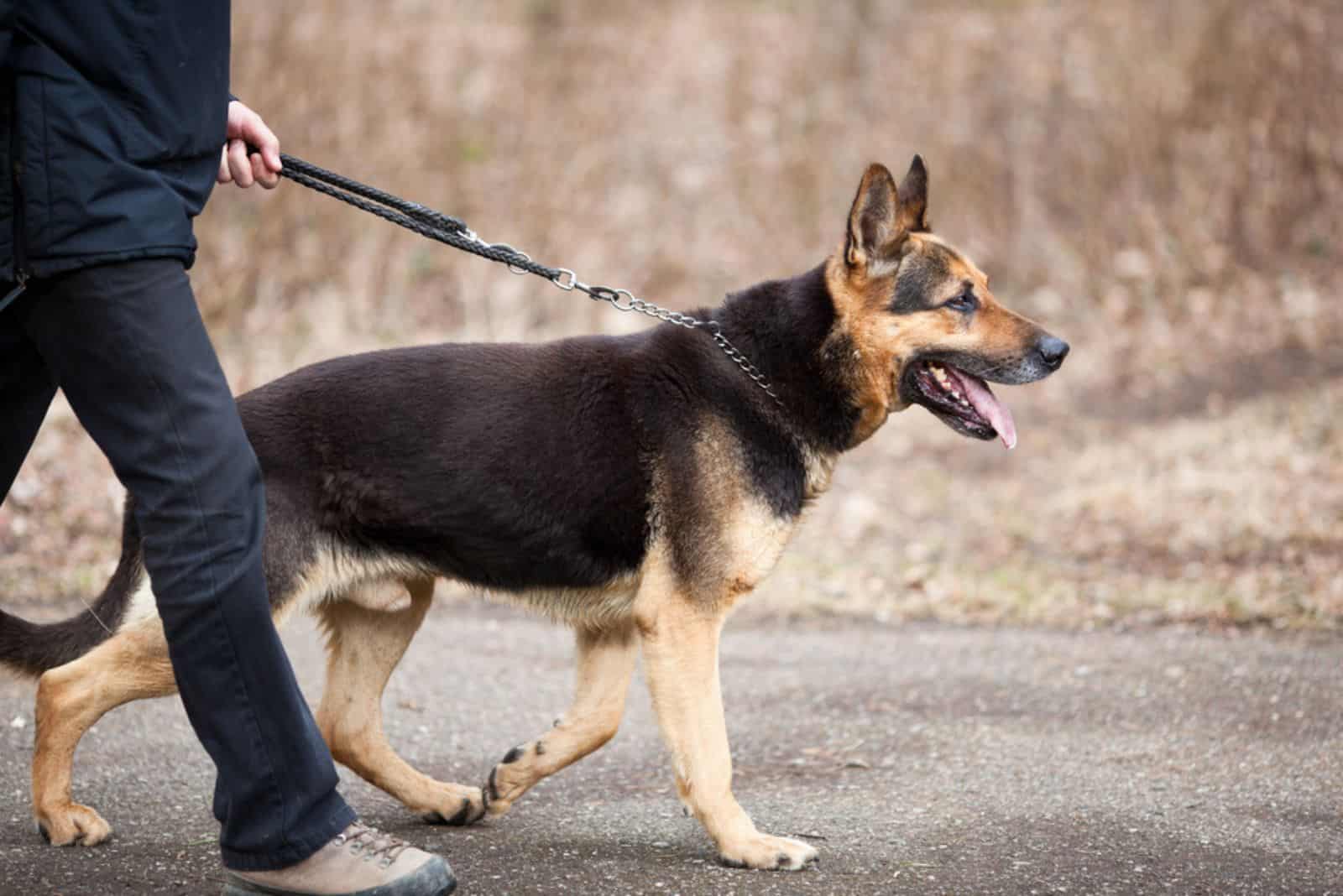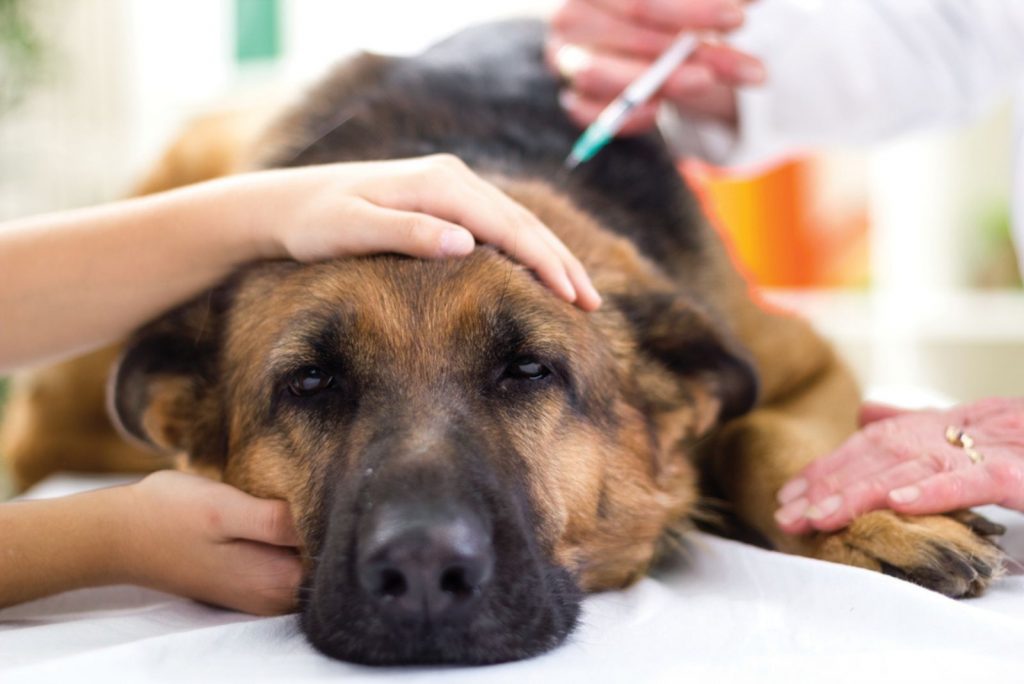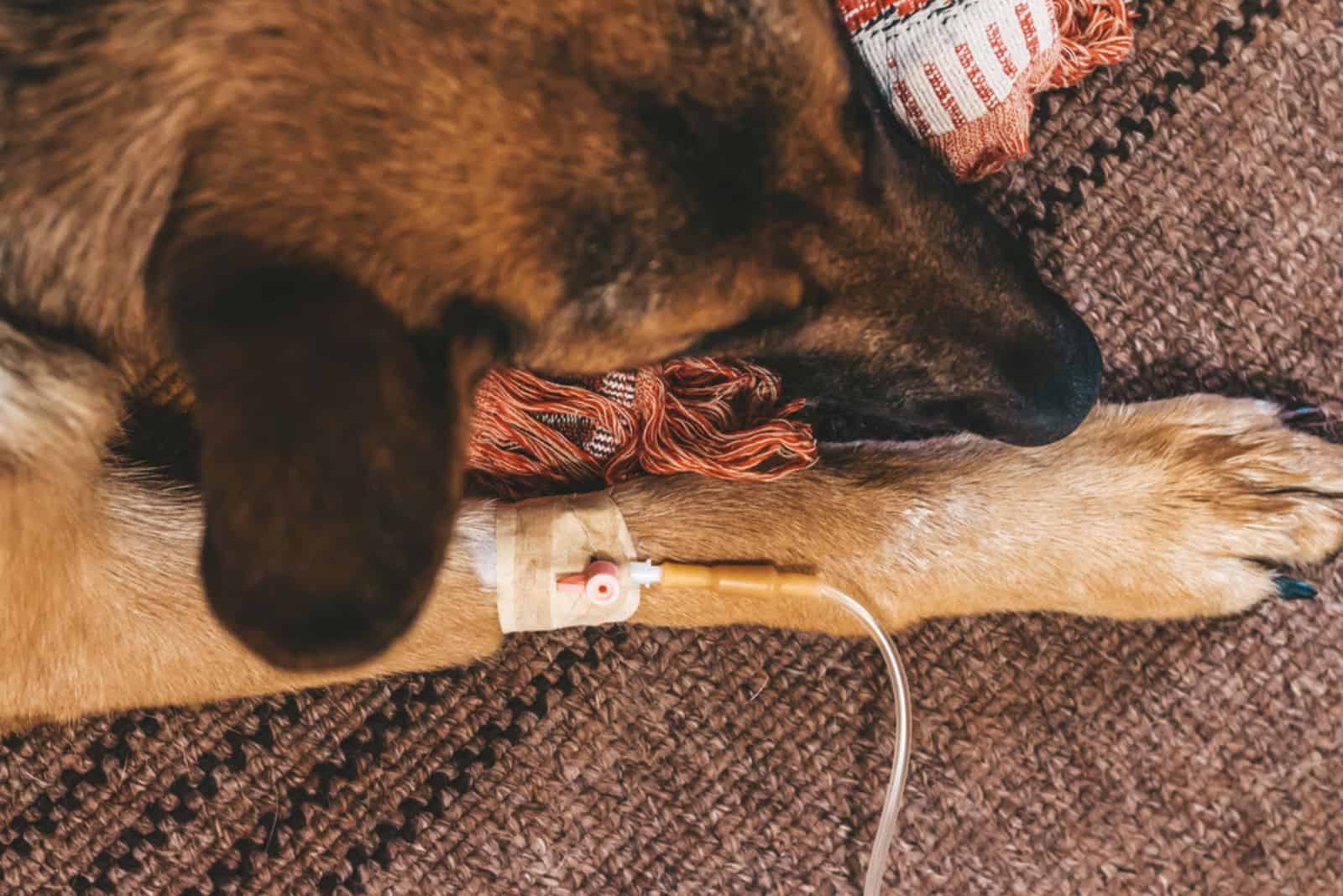The largest portion of leg problems in dogs are associated with the hind legs, but the front legs are not immune to conditions that affect the musculoskeletal system. With German shepherd front legs problems, there can be a few possible underlying health problems.
Some are minor and rather easily resolved, while others include more severe conditions that have a serious effect on a German shepherd’s quality of life. Knowing about these diseases can help you spot the clinical signs in time and potentially save or prolong your dog’s life.
Certain diseases are more common among dogs, while others present a rare occurrence. In GSDs, there is one particular that the breed is prone to, so let us have a look at the whys, whens, and hows of each one.
Anatomical Abnormalities, Neurological Conditions, And Injury

Inbreeding of German shepherds has been a hot topic for a while now. Inherited genetic diseases are something that develops when the gene pool becomes small enough to be forced to breed dogs with less than exceptional health.
A study has concluded that elbow dysplasia cases had a 0.56% incidence rate out of over 450,000 dogs. While this is a low percentage of dogs affected compared to hip dysplasia, German shepherds were found to be a high-risk breed.
Canine degenerative myelopathy is another progressive neurological disorder that GSDs are prone to. While thirty-five percent of German shepherds are carriers of the DM gene mutation, the percentage of dogs that are affected by the mutation is much lower.
Unwelcome gene mutations can also have serious consequences on the muscle tone of a German shepherd, resulting in front leg problems. The two most common conditions are muscle dystrophy and atrophy.
Yet another neurological disease that exhibits symptoms consistent with front leg problems is Cervical spondylomyelopathy, commonly known as Wobbler syndrome. Although German shepherds are not known for being susceptible to it, it can still occur in GSD puppies.
Dog limbs can be affected by tumors as well. Progressive leg paralysis due to masses pressing on the peripheral spinal nerves can be asymptomatic for a while, and then suddenly cause complete loss of sensation and ability to walk once the tumor has done serious damage.
Other possible causes of German shepherd front leg problems include injury to any part of the foot or leg, or insect bites. Since these are the most common conditions, we can start off with them. Here are some tips on how to treat a limping dog at home in case of mild injury.
1. Trauma And Insect Bites
Front legs problems can be caused by something as simple as a toenail injury. Running and slippery surfaces are often behind a broken nail, which can cause your German shepherd to limp or have an irregular gait due to the nail separating from the quick.
It is not uncommon for dogs to step on an insect and get stung or bitten on the paw pads. This can be subsumed under the injury category, since the damage caused to soft tissue can become infected, and spread across the many structural parts of the front legs.
Car accidents take up a large portion of trauma-caused front legs problems in GSDs. Broken bones, torn tendons or ligaments, and nerve damage can all have clinical signs that manifest themselves through limping, difficulty moving, chronic pain, or arthritis.
Although osteoarthritis is usually a secondary condition that occurs due to bone tissue damage, a German shepherd will be in a lot of pain because of it. This will typically result in the avoidance of physical activity, “bunny hopping”, odd gait, and other movement issues.
2. Muscular Problems

Similar clinical signs affecting the front legs can also originate from a muscular problem, such as dystrophy or atrophy. While these are most frequently associated with defective genes on the X chromosome.
Male German shepherds are more likely to have this mutation due to a singular copy of the X chromosome from the parents. A faulty version of the dystrophin protein that causes leakage of internal cell content does not allow proper development and function of muscles.
Without enough muscle mass, a dog will not be able to move their joints properly. The condition gets progressively worse with a GSDs age, until the muscles become completely atrophic. This essentially means there are no muscle fibers to support normal body function, which makes the GSD look skinny..
The most common symptoms include a stiff gait, low physical activity tolerance, “skinny” legs, and a bony appearance of limbs and other skeletal structures that are usually not visible under the skin.
Keeping the muscle mass at a good level can be hard with dystrophy, but we might have just the guide for you on how to build muscle on a German shepherd dog.
3. Cervical Spondylomyelopathy
Wobbler syndrome is caused by pressure on the nerves in the neck (cervical) section of the spine caused by spine compression. It generally affects large breeds like German shepherds, Doberman Pinschers, and giant dog breeds, such as Great Danes.
Puppies are most at risk, since their bone, nerve, and muscular structure is not yet fully developed. Despite the main symptom of the condition being a shaking head, the clinical signs include front and rear limb incoordination and severe loss of muscle mass.
The combination of these clinical signs often leads to toenail and feet injuries due to the lack of sensation in the limbs. Broken toenails, knuckling, and callous skin are all common secondary signs of Wobbler syndrome.
4. Canine Degenerative Myelopathy

One of the most debilitating diseases in dogs is degenerative myelopathy. The onset of symptoms usually occurs in German shepherds aged eight or older. It carries a bad prognosis, which means there is no treatment for the condition itself.
German shepherds are a high risk group for CDM. Though it is mainly a congenital disease, environmental factors can increase the predisposition of a GSD to develop the genetic mutation.
Incomplete diets that do not provide all the required nutrients can increase the chance of genetic disorders, so consider putting your German shepherd on a raw diet. If you think raw food diets are controversial, read this article and decide for yourself.
Since it targets the spinal cord, the degeneration of the central and peripheral nervous system leads to incoordination of the hind limbs. The symptoms are very similar to hip dysplasia, but the progression of clinical signs onto the front limbs delineates it from HD.
Other symptoms are irregular gait, loss of muscle mass, poor balance while standing, limb paralysis, and urinary and bowel incontinence in the later stages of the disease. Physical rehabilitation and a specific diet can slow down the progression, but there is no cure.
5. Elbow Dysplasia
Joint diseases, such as dysplasia, are most commonly congenital, but trauma can be the underlying cause, too. The congenital variant is characterized by abnormal anatomy of the elbow joint that causes bone tissue damage, and ultimately arthritis.
The long bones of a German shepherds front legs need to perfectly fit into the adjacent structures (tendons, ligaments, cartilage, and bones) for full anatomical function. With developmental problems, some of those parts do not fully mature.
An imperfect fit between those parts of the front leg will have odd ranges of motion that interfere with adjacent structures, causing tissue damage. Compromised and broken blood vessels lead to the development of arthritis, which can be extremely painful for a dog.
Non-steroid anti-inflammatory drugs (NSAIDs) are regularly prescribed for alleviating arthritis pain, but there are some effective home remedies for dog joint pain you can try out.
Clinical signs include trouble standing and moving, low exercise tolerance, irregular gait, inability to stand up, etc. Although there are surgical procedures that can treat elbow dysplasia to a degree, they are quite complex and expensive.
Keep in mind that obesity increases the risk of elbow dysplasia. Keep your dog fit and healthy with a proper diet and regular exercise. If you are wondering how heavy your dog should be, we have the answer for you.
6. Tumors

Both benign and malignant tumorous masses can put pressure on a German shepherd’s spinal cord, leading to damage and degeneration of nerve endings. Depending on the location of the tumor, either front or back limbs might become paralyzed.
It is not uncommon for dogs to exhibit symptoms consistent with degenerative myelopathy, or elbow dysplasia, making early diagnosis difficult. Symptoms will often come and go, as the mass can shrink and expand.
Sudden onset of symptoms typically happens when the tumor is positioned so that it puts the biggest amount of pressure on the nerves, but subside once the dog changes its body position.
The most frequent clinical signs are limping, partial or full leg paralysis, irregular gait, feet dragging, etc. Taking immediate action after spotting any of these signs can save your dogs life, so do not delay that visit to the vet.
Conclusion
German shepherd front legs problems can point to something as simple as a bee sting, or as serious as degenerative myelopathy. While taking a stinger out and calling it a day is a simple fix, the proposition of being unable to help your dog with a debilitating disease can be devastating.
Keeping an eye out for symptoms and taking your German shepherd dog for a thorough examination at the vet’s office is the best course of action. Never assume it is nothing serious with such serious symptoms.
Make sure your dog’s physical activities are supervised to avoid injury to the legs, and never take it off-leash on a busy street. I hope you and your GSD will never have to worry about any of these conditions.
Read Next: Why Does My German Shepherd Put His Paw On Me? 8 Answers
